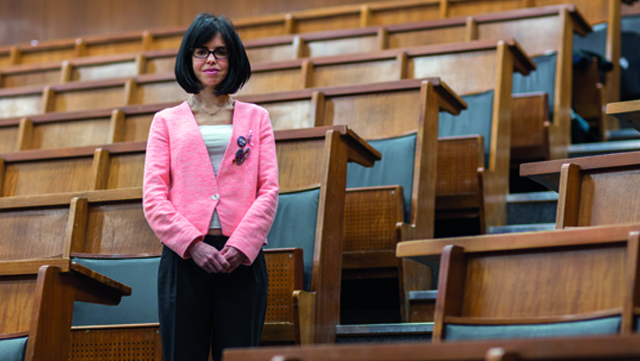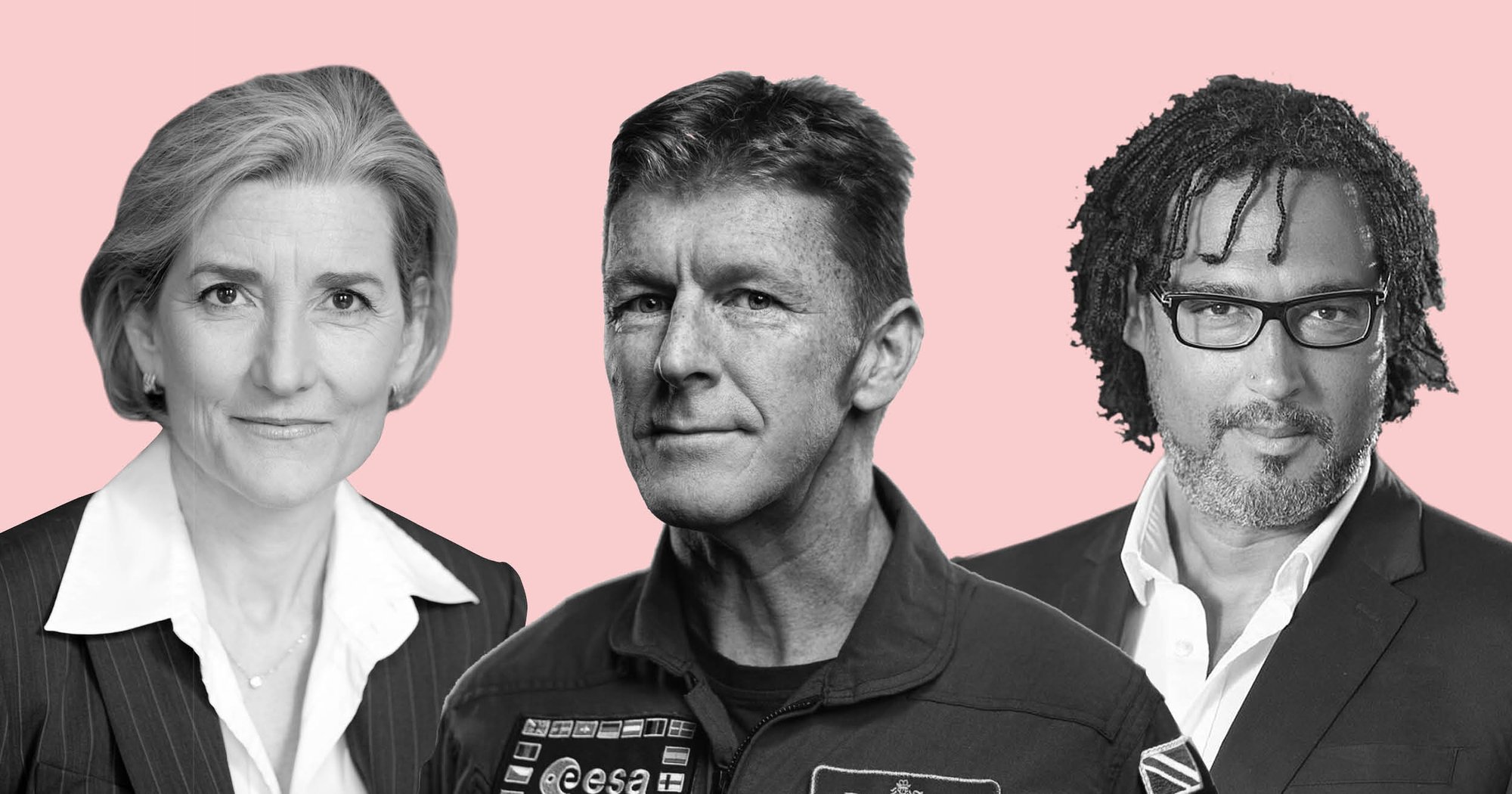Having gone to lengths to ensure young people can access balanced information about gender difference, Dr Jessica Wade urges schools to use it to spark discussions and improve diversity in STEM.
It took just 12 days for physicist Dr Jessica Wade to crowdfund the £22,000 required to get a copy of Inferior: How Science Got Women Wrong and the New Research That’s Rewriting the Story into every state school library in the UK. It’s well worth a read.
Angela Saini wrote it “not with an axe to grind” but with “a commitment to the facts”, in order to challenge traditional ideas about what it means to be a woman.
Given her academic background in science and engineering, Saini is well aware that science has treated women as intellectual inferiors since the earliest days, and she has experienced stereotyping and bias first hand.
As a journalist, she is able to revisit the research around gender difference, investigating studies that have hit the headlines and exploring the empowering new portrait of women: “as strong, strategic and smart as anyone else”.
“Today, away from the barrage of questionable research on sex differences, we have a radically new way of thinking about women’s minds and bodies,” Saini writes. “Fresh theories on sex difference, for example, suggest that the small gaps that have been found between the brains of women and men are merely statistical products of the fact that we are all unique.
“Decades of rigorous testing of girls and boys confirm that there are few psychological differences between the sexes, and that what differences can be seen are heavily shaped by culture, not biology.”
She adds that “having more women in science is changing how science is done”.
Tools to fight gender stereotyping in STEM
Inferior, published in 2017, is accessible and inspiring, though Saini admits that it “doesn’t make for comfortable reading. The facts are sometimes greyer than people might want them to be,” she acknowledges in the book’s introduction.
Its aim is to make people think — beyond the messages they have received from science and the media — and, for Wade, this questioning should begin as early as possible; hence her mission to get the book into schools.
“There was a boom of neuroscience experiments in the mid 1990s, all of which set out to show that men’s and women’s brains are different,” she argues.
“We now have a generation of people — today’s teachers and parents — who were brought up on this. They have such an influence on what young people think about themselves and the choices they make.”
After discovering the book, Wade took it everywhere, she explains. “At every conference I went to, I gave it to scientists, and to all the work experience students I had. I then figured it would be great to get it into every state school in the country.
“The Institute of Physics (IOP) has shown that you can’t just tell girls they’re brilliant and should be more confident; you have to give them the tools to be able to fight whatever they’re feeling themselves; to recognise that the biases and stereotypes in society are nothing to do with them.”
Ultimately, supporting more girls to study sciences and choose STEM careers involves giving them access to the facts about their aptitude and abilities, as well as the value and creativity of science and engineering.
In the history of science, we have to hunt for the women – not because they weren’t capable of doing the research, but because, for a large chunk of time, they didn’t have the chance. We’re still living with the legacy of an establishment thats just beginning to recover from centuries of entrenched exclusion and privilege
Angela Saini – Inferior
“I think careers advice is the most important thing in all of this,” asserts Wade.
Copies of Inferior were sent to schools in January and she has been gratified to receive positive feedback. “I did a physics talk at a university in Sussex and a bunch of girls had come just to talk about the book,” she recalls. “They’d got it at their schools and we spoke a lot about that. I’ve also had some great emails from teachers who have used it to start discussions about biases and stereotyping, which was exactly what I wanted.”
Its messages are as important for boys as girls, she points out: “The stereotypes society puts on boys hold them back just as much. I don’t think we should limit anyone.”
Changing gender demographics in physics academia and careers
Wade, who is a post-doctoral researcher in physics at Imperial College London, declares a personal interest in encouraging more girls into science — and particularly into physics, which remains dominated by (white, middle-class) men.
A self-proclaimed ‘chief troublemaker’ — editing Wikipedia entries to ensure women and people of colour are recognised for their achievements in science — she herself was inspired by a “brilliant physics teacher” at her all-girls’ school. However, when doing her doctorate, the gender imbalance became clear.
“The percentage of physics professors who are women is about 11% in the UK and I don’t think there’s a single physics professor (male or female) who’s black,” she says. “So you become incredibly aware of the lack of diversity.
“It damages school kids because the stereotypes they get from physics are entirely true, but it also damages the science we do, because we don’t have enough people from different backgrounds working on challenges such as climate change, antibiotic resistance or getting everyone clean water. We’ve had physicists for a long time who look and think the same, so we haven’t really got proper answers to those.
“We also don’t have enough scientists who are good at communicating and doing that policy dialogue,” adds Wade. She warns that students rarely have a clear idea of what you can do with physics, which puts them off studying it at A level.
“Around 60% of the physics graduates from Imperial go on to work in investment banking and a physics degree is just as useful if you want to work in the government or journalism,” she says. “There are no professions where a physics A level wouldn’t benefit you — some of the best medical doctors started their scientific careers with physics degrees.
Having more women in science is changing how science is done
“There’s so much exciting research at the moment: you’ve got extraordinary telescopes being built all over the world; opportunities to create bespoke medicines and even chances to design new chemicals using artificial intelligence. Young scientists are in such a lucky position to enter this world. They need to take some responsibility and do it, but first we have to tell them about what’s on offer.”
Promoting STEM careers at school
To achieve this, she urges schools to provide more robust STEM careers advice, mentoring systems with recent alumni, particularly for girls, and to invite scientists to talk at options evenings, “getting teachers and parents involved in that discussion too”.
With alumni, she suggests “more than just one-off interventions” to enable students to gain relevant, honest advice “from people who are just a little bit older”.
“I’d encourage all schools to work with the IOP,” she adds. “They have a network of physicists across the country who can come in for talks and they really help with the way you do it: the stories you tell and the careers advice you give. They also have an award scheme called Gender Action to recognise schools that are committed to ending stereotypes and promoting gender equality.”
In addition, the IOP offers CPD for teachers, including free training via its Stimulating Physics Network, while its TalkPhysics website offers a forum for discussion and sharing ideas.
“I’m fully aware that teachers have a lot on their plates and asking them to take more on is hard,” says Wade. “But it’s fantastic and free.”
Saini’s latest book Superior: the Return of Race Science, was published in May 2019.
















